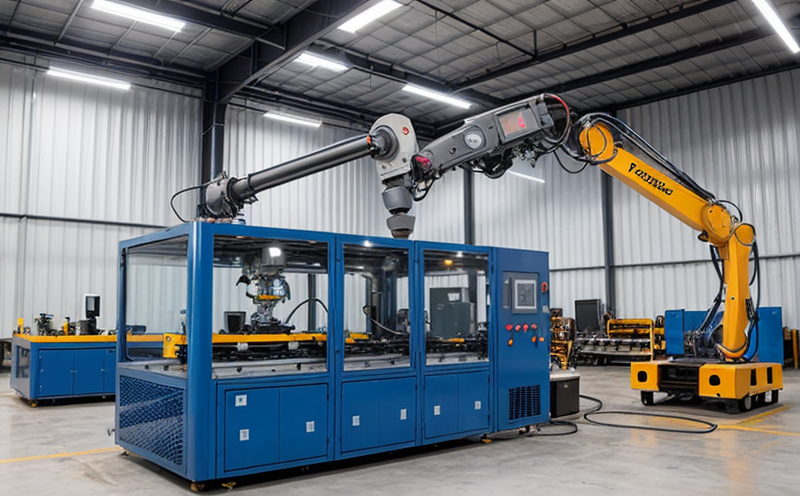ASTM F3173 Robot Mapping and Localization Testing
The ASTM F3173 standard provides a framework for testing robotic systems that rely on mapping and localization technologies. This service is crucial for ensuring the accuracy, reliability, and safety of robots operating in dynamic environments such as industrial manufacturing facilities, warehouses, and autonomous vehicle systems.
Robots equipped with mapping and localization capabilities are designed to navigate complex terrains and perform tasks autonomously or semi-autonomously. Mapping involves creating a three-dimensional representation of an environment using sensor data, while localization refers to determining the robot's position within that map accurately. The accuracy and consistency of these processes directly impact operational efficiency and safety.
The ASTM F3173 standard defines specific testing protocols to evaluate various aspects of mapping and localization systems, including:
- Accuracy in distance measurement
- Precision of orientation determination
- Robustness against environmental changes
- Effectiveness under varying lighting conditions
- Data consistency over time
The testing process begins with careful preparation, which includes:
- Calibrating the robot's sensors according to manufacturer specifications
- Ensuring all software updates and patches are applied
- Selecting appropriate test environments that mimic real-world conditions as closely as possible
During testing, multiple scenarios are simulated to assess how effectively the robot can:
- Identify and map its surroundings
- Locate itself within the mapped environment
- Adapt to changes in lighting or other environmental factors
- Handle unexpected obstacles or disruptions
The data collected during these tests is analyzed using statistical methods to ensure compliance with ASTM F3173 requirements. Compliance indicates that the robot can operate reliably and safely, which is essential for industrial applications.
This service ensures that robotic systems meet industry standards and customer expectations, thereby enhancing operational efficiency and safety within manufacturing processes. By adhering to such rigorous testing protocols, industries can trust that their automated systems are performing as intended without compromising on quality or safety.
Why It Matters
The importance of ASTM F3173 robot mapping and localization testing cannot be overstated in today's rapidly advancing technological landscape. With increasing demands for automation and autonomy, ensuring that robotic systems perform reliably is critical to maintaining productivity and safety.
In industrial manufacturing settings, robots play a pivotal role in various tasks ranging from assembly line operations to material handling. The accuracy of mapping and localization directly affects the precision with which these robots can execute their designated tasks. Inaccuracies or inconsistencies could lead to product defects, increased downtime, and even accidents involving both personnel and equipment.
Localization testing ensures that a robot can accurately determine its position within a mapped environment, enabling it to navigate safely and efficiently. This is particularly important in environments where multiple robots are operating simultaneously, such as large warehouses or complex manufacturing floors. Proper localization minimizes the risk of collisions and supports seamless task coordination among robotic units.
Moreover, compliance with ASTM F3173 standards provides a layer of assurance for quality managers and compliance officers that the systems they deploy meet international benchmarks. This not only enhances credibility but also facilitates smoother integration into global supply chains where adherence to specific testing protocols is often required.
Customer Impact and Satisfaction
The outcomes of ASTM F3173 robot mapping and localization testing significantly influence customer satisfaction in industrial manufacturing environments. By ensuring that robotic systems operate reliably, these tests contribute directly to enhanced productivity and safety.
- Increased Productivity: Reliable robots reduce downtime due to malfunctions or inaccuracies, allowing for continuous operation even during peak demand periods.
- Better Safety: Accurate localization ensures that robots can navigate safely around human workers without posing risks. This reduces the likelihood of accidents and injuries in mixed-humane robot environments.
- Improved Quality: Precise mapping and localization lead to more accurate task execution, reducing errors and defects in manufacturing processes.
- Simplified Maintenance: Regular testing helps identify potential issues early on, enabling proactive maintenance that extends the life of robotic assets.
Clients who invest in ASTM F3173-compliant robotic systems benefit from reduced operational costs and improved efficiency. They can trust that their investments are backed by rigorous quality assurance processes, ensuring long-term reliability and performance.
Environmental and Sustainability Contributions
The testing of robots according to ASTM F3173 standards also has broader implications for environmental sustainability. By ensuring that robotic systems operate efficiently and safely, these tests contribute to reducing waste and optimizing resource use within industrial settings.
Accurate mapping allows robots to navigate more precisely, minimizing the need for redundant movements or rework due to misalignment. This not only increases productivity but also reduces energy consumption associated with unnecessary processes. Similarly, reliable localization helps in optimizing path planning, further conserving resources and reducing emissions from equipment operation.
In addition, by supporting safer operations within industrial environments, ASTM F3173-compliant robots can help reduce the environmental impact of accidents and injuries, which might otherwise lead to higher waste generation or resource depletion due to remediation efforts. Through these contributions, clients not only enhance their operational efficiency but also align with broader sustainability goals.





